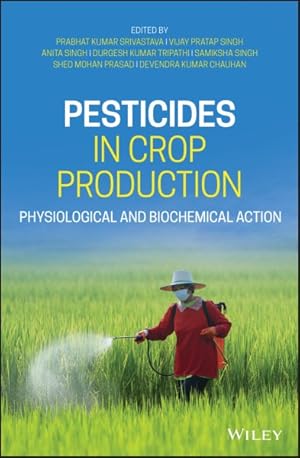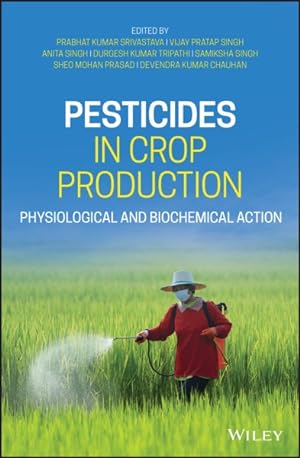Vijay Pratap Singh Samiksha Durgesh (107 results)
FeedbackSearch filters
Product Type
- All Product Types
- Books (107)
- Magazines & Periodicals (No further results match this refinement)
- Comics (No further results match this refinement)
- Sheet Music (No further results match this refinement)
- Art, Prints & Posters (No further results match this refinement)
- Photographs (No further results match this refinement)
- Maps (No further results match this refinement)
- Manuscripts & Paper Collectibles (No further results match this refinement)
Condition Learn more
- New (98)
- As New, Fine or Near Fine (8)
- Very Good or Good (No further results match this refinement)
- Fair or Poor (No further results match this refinement)
- As Described (1)
Binding
Collectible Attributes
- First Edition (2)
- Signed (No further results match this refinement)
- Dust Jacket (No further results match this refinement)
- Seller-Supplied Images (43)
- Not Print on Demand (90)
Language (1)
Free Shipping
Seller Location
Seller Rating
-
REACTIVE OXYGEN SPECIES IN PLANTS: BOON OR BANE - REVISITING THE ROLE OF ROS
Seller: Basi6 International, Irving, TX, U.S.A.
Condition: Brand New. New. US edition. Expediting shipping for all USA and Europe orders excluding PO Box. Excellent Customer Service.
-
Reactive Oxygen Species in Plants: Boon Or Bane - Revisiting the Role of ROS
Seller: ALLBOOKS1, Direk, SA, Australia
£ 100.67
Convert currencyFree shipping from Australia to U.S.A.Quantity: 1 available
Add to basket -
Revisiting the Role of Reactive Oxygen Species (ROS) in Plants ROS Boon or Bane for Plants?
Seller: Books Puddle, New York, NY, U.S.A.
Condition: New.
-
Revisiting the Role of Reactive Oxygen Species (ROS) in Plants ROS Boon or Bane for Plants?
Seller: Majestic Books, Hounslow, United Kingdom
£ 118.13
Convert currency£ 6.50 shipping from United Kingdom to U.S.A.Quantity: 1 available
Add to basketCondition: New.
-
Condition: New.
-
Condition: New. SUPER FAST SHIPPING.
-
Condition: New.
-
Revisiting the Role of Reactive Oxygen Species (ROS) in Plants ROS Boon or Bane for Plants?
Seller: Biblios, Frankfurt am main, HESSE, Germany
£ 127.70
Convert currency£ 8.64 shipping from Germany to U.S.A.Quantity: 1 available
Add to basketCondition: New.
-
Plant Responses to Nanomaterials (Paperback)
Published by Springer Nature Switzerland AG, Cham, 2022
ISBN 10: 3030367428 ISBN 13: 9783030367428
Language: English
Seller: Grand Eagle Retail, Mason, OH, U.S.A.
Paperback. Condition: new. Paperback. The population of the world continues to increase at an alarming rate. The trouble linked with overpopulation ranges from food and water scarcity to inadequacy of space for organisms. Overpopulation is also linked with several other demographic hazards, for instance, population blooming will not only result in exhaustion of natural repositories, but it will also induce intense pressure on the world economy. Today nanotechnology is often discussed as a key discipline of research but it has positive and negative aspects. Also, due to industrialization and ever-increasing population, nano-pollution has been an emerging topic among scientists for investigation and debate. Nanotechnology measures any substance on a macromolecular scale, molecular scale, and even atomic scale. More importantly, nanotechnology deals with the manipulation and control of any matter at the dimension of a single nanometer. Nanotechnologyand nanoparticles (NPs) play important roles in sustainable development and environmental challenges as well. NPs possess both harmful and beneficial effects on the environment and its harboring components, such as microbes, plants, and humans. There are many beneficial impacts exerted by nanoparticles, however, including their role in the management of waste water and soil treatment, cosmetics, food packaging, agriculture, biomedicines, pharmaceuticals, renewable energies, and environmental remedies. Conversely, NPs also show some toxic effects on microbes, plants, as well as human beings. It has been reported that use of nanotechnological products leads to the more accumulation of NPs in soil and aquatic ecosystems, which may be detrimental for living organisms. Further, toxic effects of NPs on microbes, invertebrates, and aquatic organisms including algae, has been measured. Scientists have also reported on the negative impact of NPson plants by discussing the delivery of NPs in plants. Additionally, scientists have also showed that NPs interact with plant cells, which results in alterations in growth, biological function, gene expression, and development. Thus, there has been much investigated and reported on NPs and plant interactions in the last decade. This book discusses the most recent work on NPs and plant interaction, which should be useful for scientists working in nanotechnology across a wide variety of disciplines. Thus, there has been much investigated and reported on NPs and plant interactions in the last decade. This book discusses the most recent work on NPs and plant interaction, which should be useful for scientists working in nanotechnology across a wide variety of disciplines. Shipping may be from multiple locations in the US or from the UK, depending on stock availability.
-
Plant Responses to Nanomaterials: Recent Interventions, and Physiological and Biochemical Responses (Nanotechnology in the Life Sciences)
Seller: Best Price, Torrance, CA, U.S.A.
Condition: New. SUPER FAST SHIPPING.
-
Plant Responses to Nanomaterials: Recent Interventions, and Physiological and Biochemical Responses (Nanotechnology in the Life Sciences)
Seller: Best Price, Torrance, CA, U.S.A.
Condition: New. SUPER FAST SHIPPING.
-
Condition: As New. Unread book in perfect condition.
-
£ 135.96
Convert currency£ 6.76 shipping from United Kingdom to U.S.A.Quantity: 7 available
Add to basketHRD. Condition: New. New Book. Shipped from UK. Established seller since 2000.
-
Plant Responses to Nanomaterials: Recent Interventions, and Physiological and Biochemical Responses (Nanotechnology in the Life Sciences)
Seller: Lucky's Textbooks, Dallas, TX, U.S.A.
Condition: New.
-
Plant Responses to Nanomaterials: Recent Interventions, and Physiological and Biochemical Responses (Nanotechnology in the Life Sciences)
Seller: Lucky's Textbooks, Dallas, TX, U.S.A.
Condition: New.
-
£ 131.02
Convert currency£ 11.98 shipping from United Kingdom to U.S.A.Quantity: Over 20 available
Add to basketCondition: New. In.
-
Pesticides in Crop Production : Physiological and Biochemical Action
Seller: GreatBookPrices, Columbia, MD, U.S.A.
Condition: As New. Unread book in perfect condition.
-
£ 131.01
Convert currency£ 15 shipping from United Kingdom to U.S.A.Quantity: 17 available
Add to basketCondition: New.
-
Hydrogen Sulfide in Plant Biology: Past and Present
Seller: Majestic Books, Hounslow, United Kingdom
£ 145.91
Convert currency£ 6.50 shipping from United Kingdom to U.S.A.Quantity: 3 available
Add to basketCondition: New.
-
£ 146.97
Convert currency£ 5.02 shipping from United Kingdom to U.S.A.Quantity: 1 available
Add to basketPAP. Condition: New. New Book. Shipped from UK. Established seller since 2000.
-
£ 138.40
Convert currency£ 15 shipping from United Kingdom to U.S.A.Quantity: 17 available
Add to basketCondition: As New. Unread book in perfect condition.
-
Ethylene in Plant Biology (Hardcover)
Published by John Wiley & Sons Inc, New York, 2022
ISBN 10: 1119744687 ISBN 13: 9781119744689
Language: English
Seller: Grand Eagle Retail, Mason, OH, U.S.A.
Hardcover. Condition: new. Hardcover. ETHYLENE IN PLANT BIOLOGY Comprehensive resource detailing the role of ethylene in plant development regulation, gene regulation, root development, stress tolerance, and more Ethylene in Plant Biology presents ethylene research from leading laboratories around the globe to allow readers to gain strong foundational coverage of the topic and aid in further ethylene research as it pertains to plant biology. The work covers general ideas as well as more specific and technical knowledge, detailing the overall role of ethylene in plant biology as a gaseous plant hormone that has emerged as an important signaling molecule which regulates several steps of a plants life cycle. The ideas covered in the work range from discovery of ethylene, to its wide roles in plant growth and development, all the way to niche topics such as stress acclimation. Written by highly qualified authors in fields directly related to plant biology and research, the work is divided into 20 chapters, with each chapter covering a specific facet of ethylene or the interaction between ethylene and plant health. Topics discussed in the text include: Our current understanding of ethylene and fruit ripening, plus the role of ethylene in flower and fruit developmentEthylene implications in root development and crosstalk of ethylene with other phytohormones in plant developmentEthylene as a multitasking regulator of abscission processes and powerful coordinator of drought responsesMechanisms for ethylene synthesis and homeostasis in plants, along with ethylene and phytohormone crosstalk in plant defenseEthylene and metabolic reprogramming under abiotic stresses, as well as ethylenes applications in crop improvement For biologists, scientists, researchers, and policy makers in the agriculture and pharmaceutical industries, Ethylene in Plant Biology is a key resource to understand the state of the art in the field and establish a foundation of knowledge that can power future research efforts and practical applications. Shipping may be from multiple locations in the US or from the UK, depending on stock availability.
-
Condition: New. 1st edition NO-PA16APR2015-KAP.
-
Gaba in Plants : Biosynthesis, Plant Development and Food Security
Seller: GreatBookPrices, Columbia, MD, U.S.A.
Condition: As New. Unread book in perfect condition.
-
Pesticides in Crop Production : Physiological and Biochemical Action
Seller: GreatBookPrices, Columbia, MD, U.S.A.
Condition: New.
-
Pesticides in Crop Production (Hardcover)
Published by John Wiley & Sons Inc, New York, 2020
ISBN 10: 1119432197 ISBN 13: 9781119432197
Language: English
Seller: Grand Eagle Retail, Mason, OH, U.S.A.
Hardcover. Condition: new. Hardcover. A guide to the diversity of pesticides used in modern agricultural practices, and the relevant social and environmental issues Pesticides in Crop Production offers an important resource that explores pesticide action in plants; pesticide metabolism in soil microbes, plants and animals; bioaccumulation of pesticides and sensitiveness of microbiome towards pesticides. The authors explore pesticide risk assessment, the development of pesticide resistance in pests, microbial remediation of pesticide intoxicated legumes and pesticide toxicity amelioration in plants by plant hormones. The authors include information on eco-friendly pest management. They review the impact of pesticides on soil microorganism, crops and other plants along with the impact on other organisms like aquatic fauna and terrestrial animals including human beings. The book also contains an analysis of pesticide by GC-MS/MS (Gas Chromatography tandem Mass Spectrometry) a reliable method for the quantification and confirmation of multiclass pesticide residues. This important book: Offers a comprehensive guide to the use of the diversity of pesticides and the pertinent social and environmental issuesExplores the impact of pesticides from morphological, anatomical, physiological and biochemical perspectivesShows how pesticides affects soil microorganisms, crops and other plants along with the impact on other organisms like aquatic fauna and animalsCritically examines whether chemical pesticides are boon or bane and whether they can be replaced by environmental friendly pesticides Written for students, researchers and professionals in agriculture, botany, entomology and biotechnology, Pesticides in Crop Production examines the effects of chemical pesticides and the feasibility of using bio-pesticides. Shipping may be from multiple locations in the US or from the UK, depending on stock availability.
-
£ 155.47
Convert currency£ 5.87 shipping from United Kingdom to U.S.A.Quantity: 3 available
Add to basketHRD. Condition: New. New Book. Shipped from UK. Established seller since 2000.
-
Plant Responses to Nanomaterials: Recent Interventions, and Physiological and Biochemical Responses (Nanotechnology in the Life Sciences)
Seller: Ria Christie Collections, Uxbridge, United Kingdom
£ 149.62
Convert currency£ 11.98 shipping from United Kingdom to U.S.A.Quantity: Over 20 available
Add to basketCondition: New. In.
-
Plant Responses to Nanomaterials: Recent Interventions, and Physiological and Biochemical Responses (Nanotechnology in the Life Sciences)
Seller: Ria Christie Collections, Uxbridge, United Kingdom
£ 149.62
Convert currency£ 11.98 shipping from United Kingdom to U.S.A.Quantity: Over 20 available
Add to basketCondition: New. In.
-
Pesticides in Crop Production : Physiological and Biochemical Action
Seller: GreatBookPricesUK, Woodford Green, United Kingdom
£ 148.64
Convert currency£ 15 shipping from United Kingdom to U.S.A.Quantity: 11 available
Add to basketCondition: As New. Unread book in perfect condition.
















